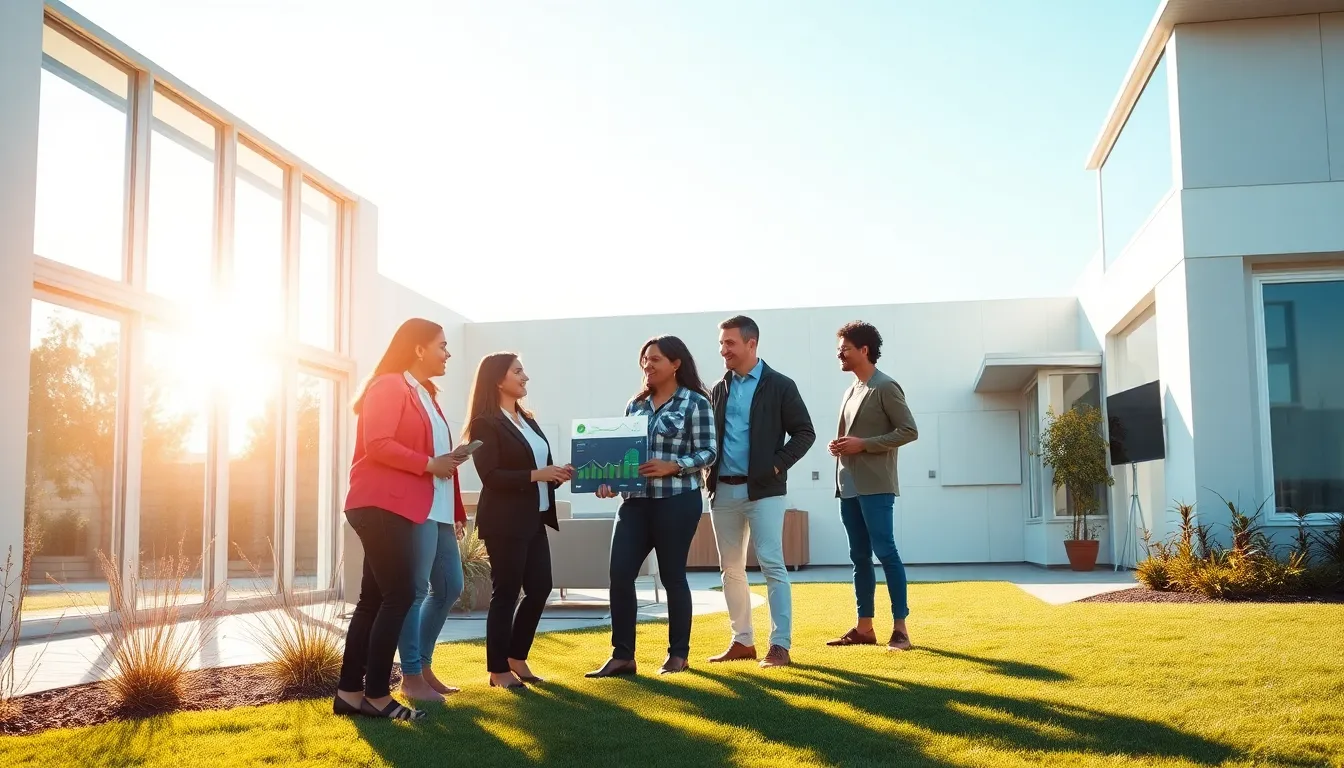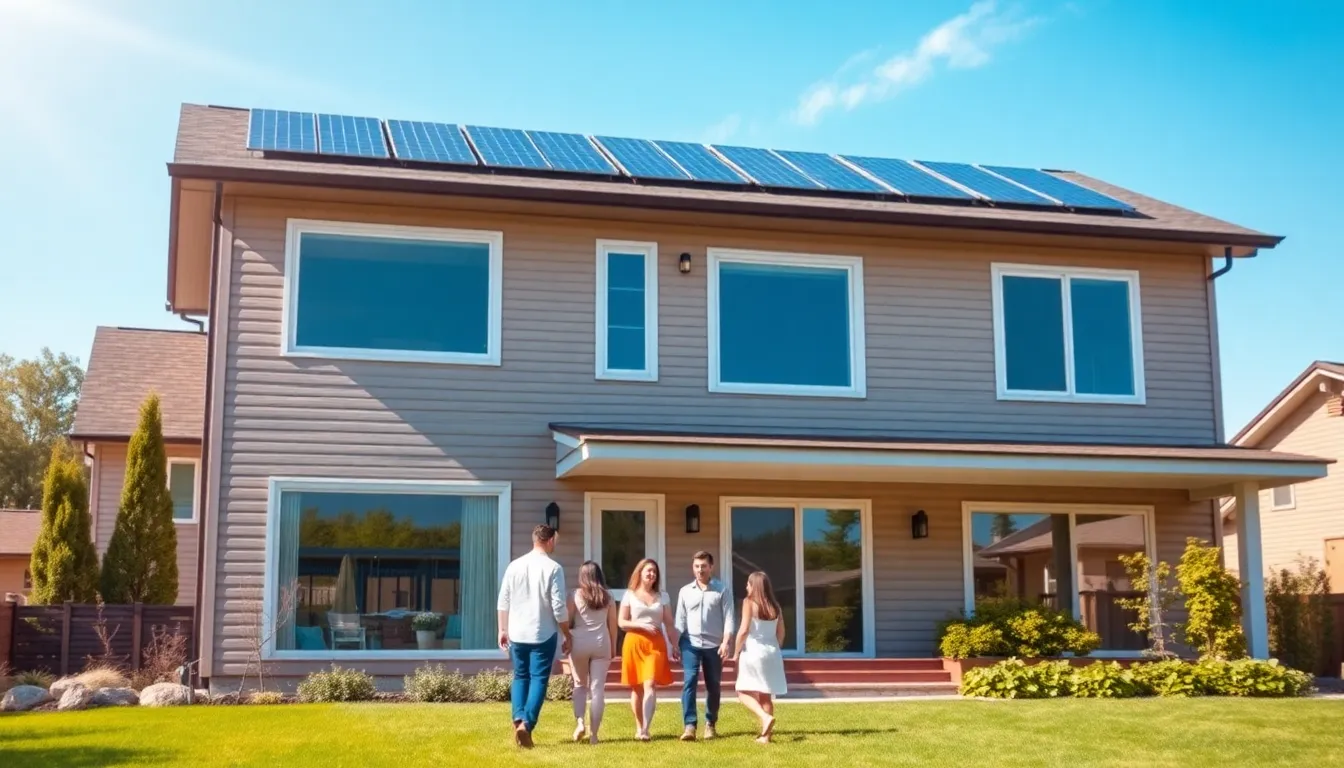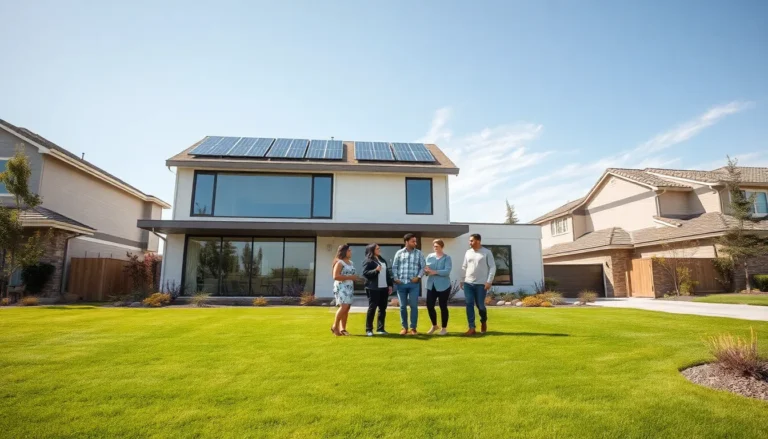Table of Contents
ToggleLet’s be honest: the last thing anyone wants is a heat-sucking energy monster lurking behind their walls. Energy efficiency in new homes isn’t just a buzzword tossed around at cocktail parties, it’s a genuine game changer for homeowners and the planet alike. So, if you think new homes might just be lavish hoarders of energy, hold onto your roof tiles. In this deep dive, we’ll explore everything you need to know to determine if new homes are truly energy efficient. Spoiler alert: it’s better than you think.
Understanding Energy Efficiency in New Homes

Energy efficiency refers to using less energy to provide the same service. For new homes, this translates to sophisticated design choices, innovative materials, and advanced technologies aimed at reducing energy consumption. Unlike older homes, which may need a dozen adjustments to meet energy-saving standards, new constructions often incorporate these features right from the blueprint stage.
From insulated walls to energy-efficient appliances, new homes are crafted with an eye on performance. The aim is simple: lower energy bills while maximizing comfort and convenience. In essence, energy efficiency measures can make a house feel more like a cozy sanctuary rather than a drafty mausoleum. This shift not only leads to reduced energy costs but also contributes positively to the environment, leading to a greener future.
Key Features of Energy-Efficient Homes
What exactly makes a new home energy efficient? Here are some standout features you might encounter:
- High-Performance Insulation: Proper insulation keeps the temperature stable, drastically cutting down heating and cooling needs.
- Energy-Efficient Windows: Double or triple-glazed windows minimize heat loss while letting in natural light.
- Smart Home Technology: From programmable thermostats to smart lighting, technology plays a vital role in automating energy use.
- Energy Star Appliances: These appliances are designed to use less energy without sacrificing performance.
- Renewable Energy Sources: Many new homes now integrate solar panels, wind turbines, or geothermal systems to harness natural energy.
- LED Lighting: LED bulbs consume significantly less electricity, making them a favorite in modern home design.
Collectively, these features create an integrated system that maximizes energy efficiency without compromising on comfort or style.
Benefits of Energy Efficiency for Homeowners
Energy efficiency isn’t just a trendy buzzword, it brings real, tangible benefits to homeowners, too.
- Lower Energy Costs: Using less energy directly correlates to lower utility bills. The savings can be substantial over time.
- Increased Comfort: With better insulation and temperature control, residents enjoy a more consistent home climate, free from draughts and hot spots.
- Increased Home Value: Energy-efficient homes often command a higher resale value, making them attractive investments. Potential buyers are increasingly seeking out energy-efficient features as a deciding factor.
- Less Environmental Impact: Reducing energy consumption directly contributes to a decrease in greenhouse gas emissions. Homeowners can take pride in doing their part for the environment, which is increasingly a point of concern for many people today.
- Tax Incentives: Many regions offer tax deductions or rebates for investing in energy-efficient appliances or systems. It’s like receiving an extra bonus for being environmentally conscious.
Government Standards and Regulations
Government regulations play an essential role in shaping energy efficiency standards in homes. In many places, building codes now require energy-efficient practices.
- LEED Certification: The Leadership in Energy and Environmental Design (LEED) program recognizes buildings for sustainable practices and energy efficiency. Homes with this certification are built to high standards, focusing on energy savings, water efficiency, and overall environmental impact.
- Energy Efficiency Standards: Various agencies oversee the development of these standards, ensuring appliances perform efficiently while conserving energy.
- Incentives and Rebates: Governments provide incentives for homeowners who want to embrace energy efficiency, whether it’s tax credits or direct financial assistance.
Challenges in Achieving Energy Efficiency
While energy efficiency is a laudable goal, it does come with challenges.
- Higher Initial Costs: The upfront investment in energy-efficient materials or systems can be daunting for many homebuyers. But, it’s critical to consider the long-term savings.
- Awareness and Education: Often, potential homeowners may not fully understand the benefits of energy efficiency or know how to identify energy-efficient features.
- Building Market Stability: In fluctuating markets, some builders might cut corners, opting for cheaper, less efficient options instead of high-quality materials that promote energy efficiency.
- Retrofitting Older Homes: While new homes often come energy-efficient by design, retrofitting an older home poses its own set of complications and expenses.
Understanding these challenges can empower consumers to make more informed choices.
Future Trends in Home Energy Efficiency
As technology advances, the future looks promising for energy efficiency in homes.
- Smart Technology Expansion: Expect to see even more innovative technologies, like automated energy management systems that learn a homeowner’s habits and optimize energy use accordingly.
- Increased Renewable Energy Use: As costs for solar and wind technologies decrease, more homes will embrace these renewable resources as daily energy supplies.
- Building Materials Innovations: Advances in construction materials will allow for better insulation properties, reducing reliance on heating and cooling systems.
- Urban Planning Focus: Future development will prioritize energy-efficient designs in entire communities, not just individual homes, creating harmonized, eco-friendly living spaces.
These trends indicate that energy efficiency isn’t just a current buzz, it’s a movement that’s set to redefine how homes are built and lived in.







